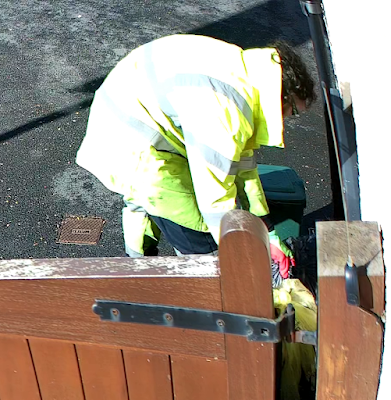I was always skeptical of eSIMs. The idea you have a mobile identity in a physical SIM that you control seems a sensible approach. An eSIM is sort of locked in to the phone, and you can't just move it. But does it matter? Possibly not.
But the real benefits were not as obvious to me until I started using one. It is mostly the benefits of a second number, or more specifically secondary service, on a mobile phone. This could just as easily be done with two physical SIMs, but it seems common for phones to have a physical SIM and additional eSIM. iPhones certainly allow a physical SIM and many eSIMs, and you can have any 2 active at ones.
Two numbers on one phone
Interestingly, the idea of more than one number is not new. When orange launched, what, 30 years ago, they allowed a secondary voice service on a second number, and their first phones allowed you to make calls and send texts on the two numbers, and know which was calling you, and so on. It was (is) a standards feature of GSM to allow a secondary number on a service. It is great for personal and work numbers on a phone, and for personal and more personal numbers or some such :-)
That was one service but with multiple numbers. I had this, and even had a separate fax and data number on the same SIM. It was only a second telephone number, not a second number for SMS though.
Using dual SIMs, or SIM+eSIM, etc, allows this but with separate service providers. Two services on one phone, including SMS.
A&A SIP2SIM
For a long time we (A&A) have sold a SIP2SIM service, a physical SIM, typically used in one of three ways:-
- Connect to your own telephone system and use as part of an office internal phone system (very niche, but what the name SIP2SIM is all about).
- Connect seamlessly to A&As service and so be a mobile phone service in itself, like normal, calls, texts, data, but with nice features like call recording (but expensive as a normal phone service)
- As above, but using a landline number not a mobile (once again, when they launched, Orange offered this).
We sold the service for all of these. The first is niche, and the others are expensive, so limited take up.
Mobile phone contracts
One of the big issues with making this your "normal mobile phone service" means "changing service provider". This means "waiting to the end of your existing contract". It also means hassle if you don't like A&As service (even with no minimum term) as that means getting a new "phone contract" which is hassle, it seems. So the hurdles are actually contractual and hassle, not technical, or even price in all cases.
But a second service on a phone solves all of that!
- It can overlap with the main contract with no hassle, and continue as such if needed.
- It can be tested, and then ceased, with no impact on main number.
- It can be activated and working in a matter of seconds.
This really is something of a game changer, and I have now seen it in action.
Talking to a friend, and he wants to sort a work number. Within minutes we have a new number allocated, a landline (apparently his older clients don't trust mobiles). It is on his phone as a second number, and working, even with iMessage. All sorted.
Am I a convert?
To be honest, more of a fan of dual numbers, which I had 30 years ago. Even with one SIM, A&A allow a lot of numbers to work to a SIM. So not quite a convert as such. But I am impressed with the easy and speed of using an eSIM, so maybe I am. I'm also a fan of a secondary service on a phone, which eSIMs make easy.
Plugging the new A&A SIP2SIM service!
Shameless plug time - the existing SIP2SIM stops working end of April. The new service is up and running, but not quite everything in place yet, so we are just allowing early access to customers before the proper launch now. More here.
It is more per month, but no air-time charges for calls/texts, some free roaming in EU and US, and (when launched) much cheaper data pricing. Call/SMS charges apply with the SIP/SMS service to which it is connected (even if A&A).
Feedback: That was ridiculously fast and easy to set up, and I got my iMessage activated without problems too.






















